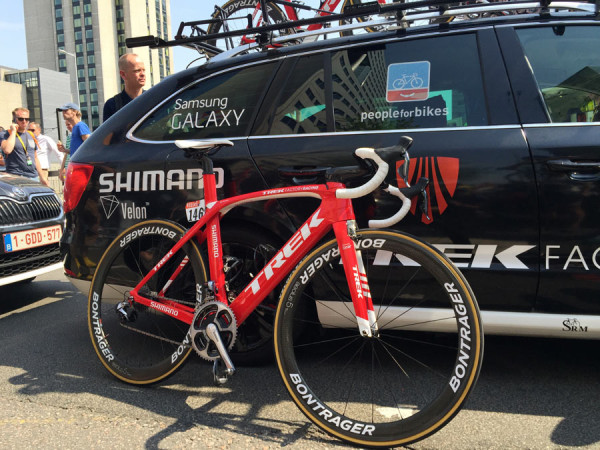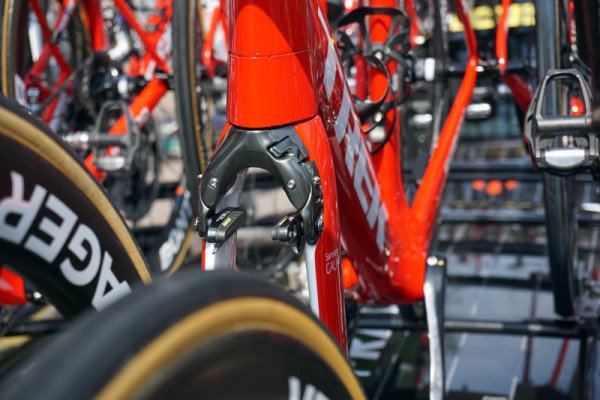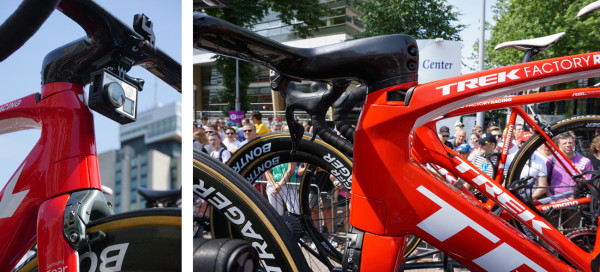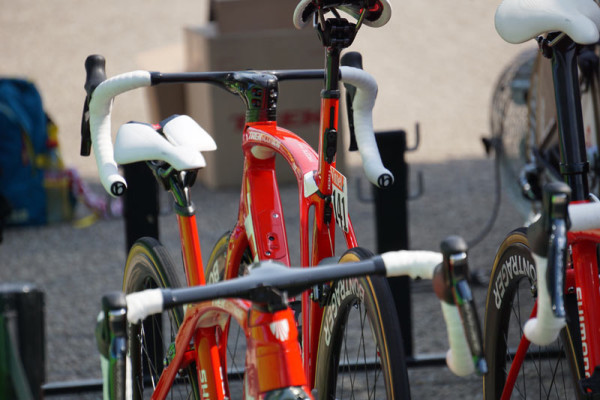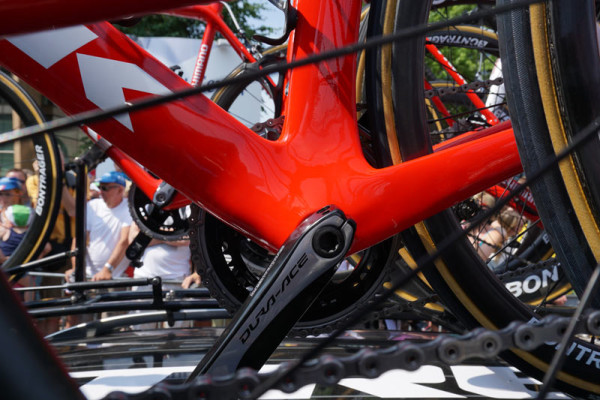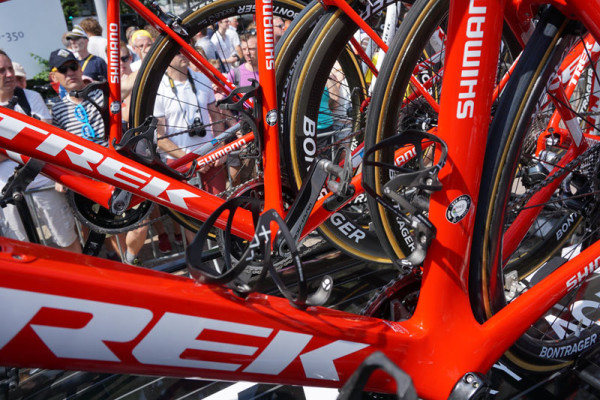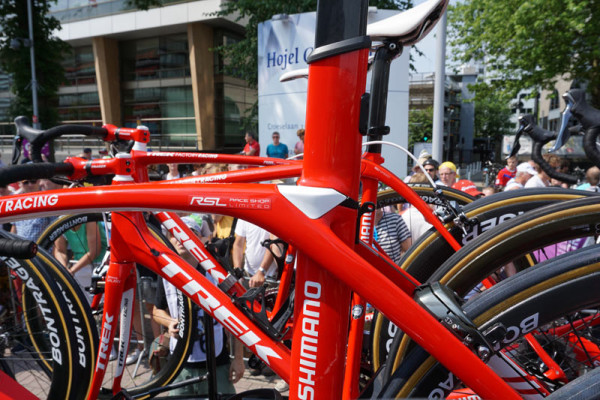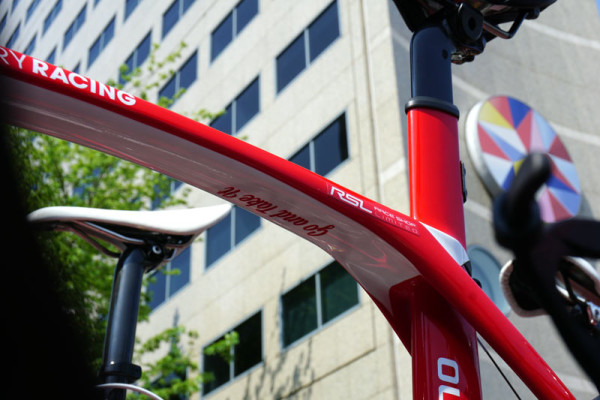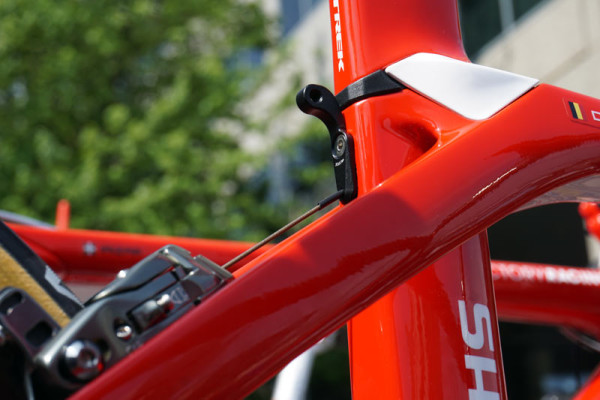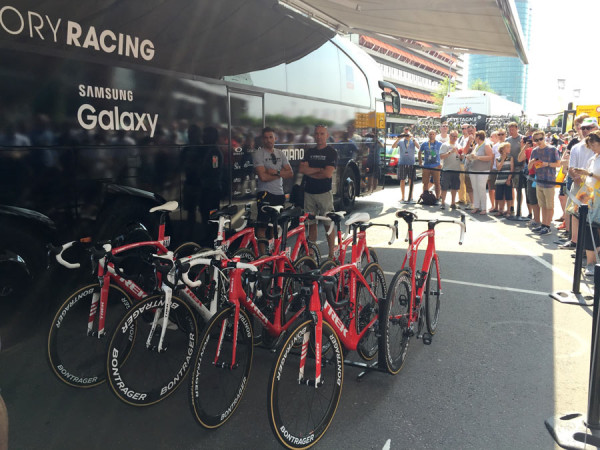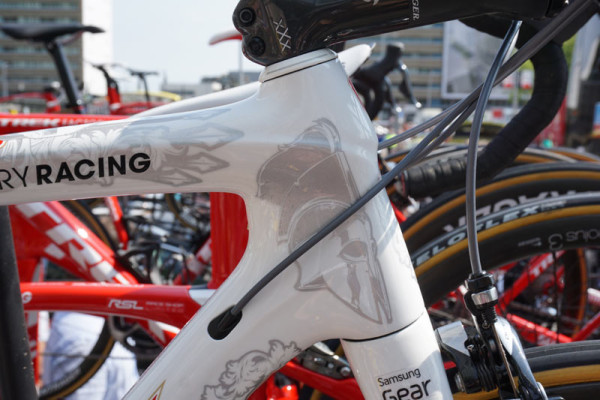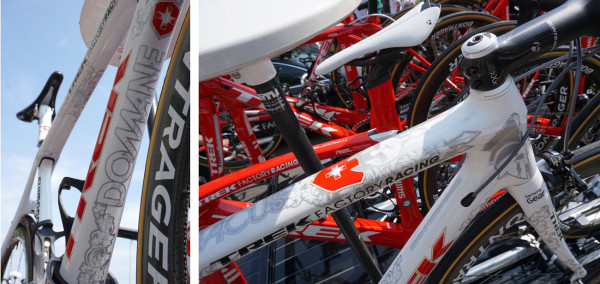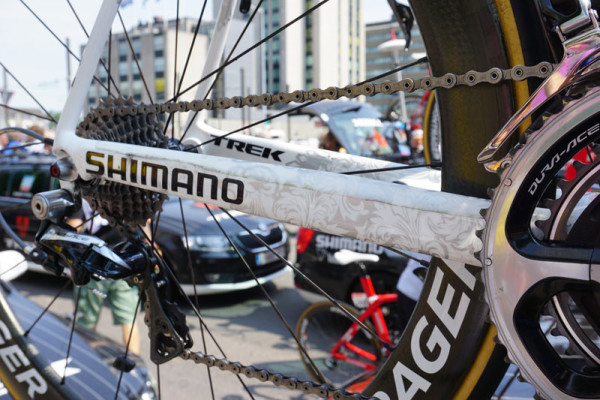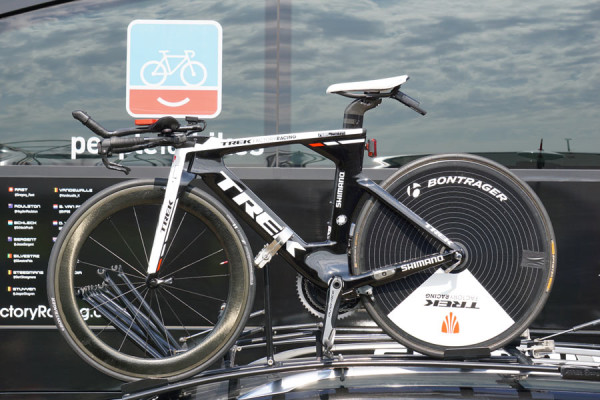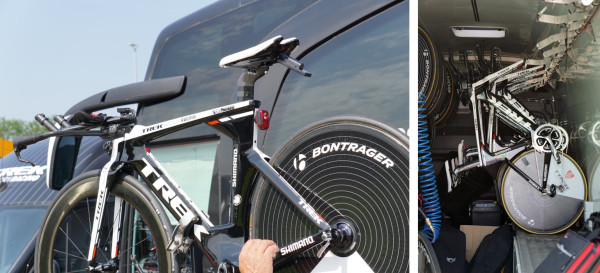For the most part, the Trek Factory Racing team appeared to be riding stock versions of the new Madone. Albeit, they’re the $13,650 Race Shop Limited version with the addition of an SRM power meter crankset, but it’s still mostly a bike you can buy off the showroom floor.
It’s stocked with plenty of Bontrager components, including the bar/stem, seatpost, saddle and wheels. But, in a departure from their usual spec, they’re not running housebrand tires…
Melding parts’ shapes and functions into the fuselage seems to be the trend for new aero bikes this year, and the new Madone is among the most aggressively integrated (Specialized’s new Venge being the other). The center pull front brakes flow seamlessly into the fork, with the cable completely hidden behind a headtube fairing.
All cables, hoses and wires run from inside the one-piece bar/stem combo into the frame. Compare the shape of the 2016 model to the 2015 Domane and Madone bikes behind it in several of the pics.
The rear brake is also a direct mount, center pull design.
Most aero road bikes that move the rear brake under the bottom bracket do so partly for aerodynamics, but also (usually) to claim improvements in compliance since they can better tune the seatstays without needing the reinforced sections to handle braking stresses. But Trek’s IsoSpeed decoupler puts a pivot between the seat tube and seatstay-top tube junction, allowing forces to pass by the seat tube and use its flex to create comfort. So, they can keep the seatstay bridge in place, which generally helps out with lateral stiffness.
And this massive bottom bracket section should also keep things very stiff.
Again, note the difference between the older models.
The tires are Veloflex, and judging from the clincher wheels being used, they’re one of Veloflex’s Open Tubular tires. The mystery is which one, since the tread pattern on these only matched up with the Roubaix tubular (from Veloflex, not Specialized!). We didn’t get a chance to ask, but we’ve reached out to Trek for answers and will update if we hear back.
“Go and Take It”
The taller seatmast leading to a semi-traditional seatpost allows the brake cable to spit out the back of the tube for better aerodynamics. We’ve seen this plenty on custom bikes from NAHBS, but rarely on a production bike. The number plate holder is integrated into the cable stop.
Team bikes are lined up outside the bus prior to the stage start. Most were aboard the new Madone, but some riders liked to keep their personalized models from a prior year on hand:
Cancellara’s Spartan-themed Domane may not be the latest and greatest, but it still looks good.
The Trek Speed Concept TT/Triathlon bikes carry over from their 2013 introduction…
…but are decked out with Bontrager’s new ultra bright tail light. Not a bad marketing ploy to run it in the world’s most famous bike race.
